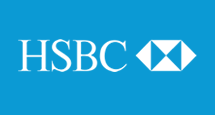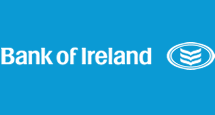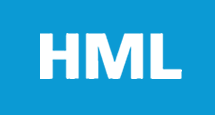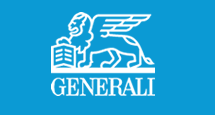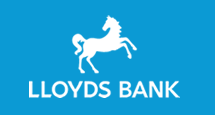Arrow Global FY 2018 Results – Weaker Cash Flow Than Headline Figures Suggest
28 February 2019
Arrow Global FY 2018 Results – Weaker Cash Flow Than Headline Figures Suggest
Rupesh Tailor, Everest Research, 28 February 2019
Summary
- Whilst most of Arrow Global's KPIs (Adj EBITDA, ERC, underlying profit after tax etc) achieved the kind of growth we have become accustomed to, our own estimate of 2018 steady state free cash flow (at £8m, c. 1% of net debt) comes out far lower than the company's estimate at £78m (c. 7% of net debt) and we view even our lower estimate as temporarily boosted by high secured collections in Portugal in the period, which tend to be lumpy. We also believe annual steady state FCF (when aggregated over time) has very little resemblance to net lifetime cash generation on portfolios as per our recent note
- Recommendation - We maintain our short in Arrow equity initiated at 194.2p and our short in Arrow £ 5.125% 2024 (senior secured bonds) initiated at 92.43 (YTW 6.8%, Z+542), both initiated on 11/1/19. Given the heavy price falls in debt purchaser securities in late 2018, we scaled both shorts modestly within our model portfolio so that we would have capacity to grow the shorts if there was any rebound. Arrow equity closed up 8% at 194p today and the senior secured bonds +c. 1 point at 96.21 (YTW 5.9%, Z+462). We will continue to wait for a better opportunity to add to our shorts in our model portfolio
Key Observations
- Key observation #1 - Arrow reported a strong FY 2018 steady state free cash flow (SS FCF) of £78m (c. 7% of net debt) based off an average Estimated Remaining Collections (ERC) replacement rate of £153m. Adjusting for replacement of collections on 2018 portfolio purchases received in 2018 (£56m on our estimates) and the inclusion of the Belgium portfolio sale (c. £10m) in collections, we estimate 2018 SS FCF at £8m (1% of net debt) compared to £4m (0% of net debt) respectively in 2017 on our preferred methodology explained in our note
- Even our lower SS FCF estimate is likely overstated given that collections in 2018 benefitted from high collections on secured Portuguese portfolios (the precise amount was not disclosed), which reflect a high degree of "principal" recovery (which is ultimately going towards debt repayment) rather than "interest earned" and temporarily boost SS FCF (and Adj EBITDA) in periods of high secured collections
- In our recent note we further show that one year SS FCF (aggregated over time) bears very little resemblance to the net lifetime cash generation of portfolios owing to the possibility whereby even portfolios that would be loss-making on a lifetime basis relative to price paid (even before collection activity costs and a share of central costs) will be Adj EBITDA and SS FCF positive early in their life as long as the cost-to-collect ratio is < 100%
- Our preferred method for estimating (the still overstated) SS FCF essentially operates as follows for 2018. Excluding the c. £10m from selling the Belgian portfolios which was included in collections in the cash flow statement, we see 2018 actual FCF excluding M&A, one-off expenses and change in working capital and before dividends and portfolio purchases at £203m. We estimate the 2018 120 month ERC replacement rate as [end 2018 Year 1 ERC - end 2018 Year 11 ERC + 2018 collections taken on portfolios purchased in 2018] divided by a 120m gross money multiple of 1.8x (in line with Arrow's stated purchasing multiple in 2018). We estimate the average 120m ERC replacement rate (£194m) by averaging the end 2018 ERC replacement rate (£211m) with the end 2017 ERC replacement rate (£178m), both calculated using the same methodology. Our 2018 SS FCF estimate is then the £203m actual FCF excluding M&A, one-off expenses and change in working capital and before dividends and portfolio purchases less that £194m 120m average ERC replacement rate, giving £8m to the nearest £1m versus Arrow's own estimate of £78m
- Key observation # 2 - Arrow's disclosed net IRRs on new portfolios purchased in 2018 improved to 17% from 15% in 2017 and 16% at 9m 2018, with that figure rising further into year end and expected to continue given more constrained funding across the industry. Whilst this is much higher than Arrow's weighted average cost of debt at 3.9%, our own estimate of Arrow's all-in net IRR (i.e. after an allocation for central costs as well as collection activity costs) on Arrow's total in-force portfolios (i.e. not just those purchased in 2018) was only 3% in 2018 (see our recent note for details), continuing a sharp trend down and now below its cost of debt, suggesting zero equity value from the current stock of portfolios owned
- We question how a 120m GMM of 1.8x on 2018 purchases can deliver a net (i.e. after collection activity costs) IRR of 17%. Whilst our note goes into considerable detail on this, put simply, a portfolio bought for £100 on a 120m GMM will deliver gross cash collections of £180 over 10 years. Arrow's underlying collection activity costs (£118m) divided by collections on owned portfolios excluding the Belgian portfolio sold (£402m) was c. 29% in 20181. Whilst we recognise that for a static portfolio the cost-to-collect ratio declines over time, such that the lifetime cost-to-collect may be c. 20% for non-performing and c. 10% for performing portfolios, even if we apply a lifetime cost-to-collect of 15% to the £180 of collections, the remaining pre-tax, pre-central cost, pre-financing "net" collections will be £153, and applying the percentage of 120m ERC which Arrow collects in each year gives a net IRR of 12% (before any allocation of central costs)
- Key observation #3 - Whilst portfolio revaluations do not impact Adj EBITDA, SS FCF or cash flow more broadly, Arrow's P&L benefitted significantly from positive portfolio revaluations in 2018 (£51m or 5% of average portfolio carrying value on our estimates) which it now discloses under IFRS 9 (prior to 2018 Arrow had reported an aggregate figure for "income from purchased loan portfolios" which combined effective interest rate (EIR) income, roll-in of the ERC tail into the 84 month balance sheet carrying value horizon and portfolio revaluations)
- Under IFRS 9, the P&L effect of portfolio revaluations and "roll-in" are combined across two lines within "total income from portfolio investments", namely "impairment gains on portfolio investments at amortised cost" (c. £51m in 2018) and "Fair value gain on portfolio investments at fair value through P&L" (c. £25m in 2018), which together totalled £76m in 2018. Whilst management said during the results call that the split of this total was c. 60% roll-in and c. 40% revaluation, our own estimates (methodology as per our note) suggest the split was roughly the other way round
- As per our estimates in our note, Arrow and Lowell have been the largest cumulative beneficiaries of true (excluding roll-in) portfolio write-ups over the past several years. Management said that positive portfolio revaluations would likely slow in 2019 as the collections outperformance in Portugal slows
- Our estimate of portfolio revaluations of 5% of average portfolio carrying value in 2018 compares to the company's implied 3%. Both are close to the 4% collections outperformance vs estimates which Arrow has achieved through time, suggesting that the collections outperformance (the extent to which actual collections come in ahead of estimates in any given period) is broadly extrapolated at least over the 84m ERC horizon, suggesting that the ERC assumes breakage rates and new payer rates broadly in line with current experience which is near peak cycle (see our recent note) and vulnerable to sharp reversal in a downturn on our estimates
- Key observation #4 - Arrow confirmed its commitment to deleveraging, to bring secured net debt/Adj EBITDA down to 3.0 - 3.5x by end 2019 from its reported 3.7x at 2018 and that, with no debt maturities until 2024 and expected 2019 portfolio purchasing holding broadly stable at c. £250m, Arrow believes it can be self-funding in terms of being able to fund continued growth with retained cash flow rather than debt funding
- As per our note, self-funding used to be the norm for the US operators (PRA and Encore) who survived the competitive natural selection process across several cycles prior to their expansion into European in 2013/2014. Both PRA and Encore were historically lowly leveraged by comparison with today's large European credit management services firms and were able to grow their portfolio investments through retained cash flow without needing material debt funding. However, as per our note, this was primarily because they invested heavily at points in the cycle when net IRRs were much higher than they are today in Europe and less because of their lower leverage
- Arrow also expects to support its drive to self funding through operational leverage (target cost : income ratio of 60% by 2023 from a company-disclosed underlying 64% in 2018) now that it has its servicing platforms complete in each of its five chosen markets following a heavy period of M&A since its IPO and growth in the purportedly capital-light Asset Management & Servicing (AMS) business. Arrow is also launching a cost review in 2019 though specific details thereof were not provided
- Arrow emphasised that M&A cash set to be paid out in H1 2019 would mean it would hit its leverage target in H2 2019
- Key observation #5 - Arrow's AMS business continues on its trajectory to achieve the targeted 25% EBITDA margin and 50% contribution to group revenue within 5 years, with AMS' EBITDA margin (pre-central costs) up to 20% in 2018 from 19% when it was first disclosed at H1 2018 and now comprising c. 33% of group revenue. Arrow expects this trajectory to be supported by its build-up of discretionary fund management over time
- Whilst AMS' 2018 Adj EBITDA was c. £27m, central costs relating to "group functions" that were neither allocated to the Investment Business (debt purchasing) nor to AMS came to c. £37m
- Key observation #6 - Arrow stated that its balance sheet (and business) is in a far stronger position today than going into the financial crisis in 2008-2009 and arguably than at any other time. However, we would caution that Arrow's portfolio carrying value was only £30m in 2007 (compared to c. £1.1bn today) and even on that small portfolio carrying value it experienced a 41% negative portfolio revaluation in 2008 (see our recent note which discusses downturn data across the industry)
- We think it is interesting that Arrow on most of its chosen KPIs comes across as a stronger business than when it IPO'ed in 2013 yet the share price has not gone up over 5 years. Comparing 2018 with 2013: Adj EBITDA £294m v £90m (+227%); 120m ERC £1,972m v £650m (+203%); underlying profit after tax £64m v £25m (+156%); the business is more diversified by segment and geography; Arrow has built up a "gardened wall" of future quasi-captive purchasing opportunities from its servicing business; Arrow claims to be purchasing more secured/paying and less risky portfolios on strong net IRRs; and Arrow has a c. EUR 1 trillion addressable market across its 5 countries of operation. Yet Arrow's share price is down c.14% since the IPO. As per our various valuation methodologies in our note, this is not a surprise - we estimate that Arrow has destroyed > £700m in equity value since its IPO through elevated portfolio purchasing volumes on poor net lifetime cash generation and ramp-up of central costs. We think the big disconnect between some of the industry favourite metrics and our valuation methodologies arise because Adj EBITDA has almost no bearing to net lifetime cash generation as per our note
- In our note, we evaluate the alternatives available for Arrow and other debt purchasers in terms of their capital allocation - whether to buy portfolios, buy back their own bonds or share buybacks - in terms of which option gives the greatest return on capital
- Key observation #7 - Whilst Arrow successfully extended the maturity on its £285m RCF to 2024 this week, we note that the RCF is substantially drawn at c. £242m at 2018. Together with cash on balance sheet of c. £92m (unclear if there are any material restrictions here), this puts available liquidity at c. £131m according to Arrow. Arrow continues to evaluate alternative funding sources (presumably securitisation facilities) - we looked at Arrow's carve-out for "Permitted Purchase Obligations" and implications for senior secured bondholders in our note
- Key observation #8 - Arrow expects its purchasing mix in Italy to increase. Italy comprised c. 31% of Arrow's portfolio purchases in 2018 and now contributes c. 11% to 120m ERC. Italy is, however, half of Arrow's c. EUR 1 tr addressable market and approximately half of its assets under management. We expect this will go hand in hand with Arrow increasing its exposure to secured portfolios (which comprised 63% of portfolios purchased in 2018). Whilst Arrow has suggested secured portfolios are lower risk, we discuss our concerns on secured portfolios (including on their accounting treatment) in our recent note
- Key observation #9 - Arrow sold its (non-core) Belgian business including portfolios (with a portfolio carrying value of c. £10m) for £12m in Q4 2019. Whilst Arrow was cautious in suggesting this 20% premium could be extrapolated to the rest of the portfolio, management felt that the sale price supported the latent value in its book. Our understanding, however, is that the portfolios were sold for c. £10m (i.e. broadly the book value) based on the cash component treated as collections within cash flow and that the remainder of the sale price relates to the collection platform
- Key observation #10 - We find it hard to reconcile Arrow's stated 1.8x 120m GMM with its change in 120m ERC and portfolio carrying value over 2018. ERC increased by £192m (from £1,780m in 2017 to £1,972m in 2018) of which £119m was due to roll-in and revaluation. Portfolio carrying value increased by £136m over 2018 (from £951m in 2017 to £1,087m in 2018), i.e. the ratio of the change in 120m ERC to change in portfolio carrying value over 2018 was 1.4x (£192m divided by £136m) compared to the reported 1.8x GMM on 2018 purchases
- Recommendation - As per our recent note we maintain our short in Arrow equity initiated at 194.2p and our short in Arrow £ 5.125% 2024 (senior secured bonds) initiated at 92.43 (YTW 6.8%, Z+542), both initiated on 11/1/19. Given the heavy price falls in debt purchaser securities in late 2018, we scaled both shorts modestly within our model portfolio so that we would have capacity to grow the shorts if there was any rebound. Arrow equity closed up 8% at 194p today and the senior secured bonds +c. 1 point at 96.21 (YTW 5.9%, Z+462). We will continue to wait for a better opportunity to add to our shorts in our model portfolio
Results Highlights
| METRIC (£ M) | 2018 | 2017 | % CHANGE | COMMENT |
| Collections | 412 | 342 | +20% |
|
| Revenue | 362 | 319 | +13% |
|
| Adj EBITDA | 294 | 231 | +28% |
|
| Steady State (SS) FCF | 78 | 48 | +63% |
|
| Underlying profit after tax | 64 | 57 | +13% |
|
| Underlying basic EPS | 36.6p | 32.4p | +13% | |
| Dividend per share | 12.7p | 11.3p | +12% |
|
| Secured net debt / Adj EBITDA | 3.7x | 3.9x | ||
| Portfolio carrying value | 1,087 | 951 | +14% | |
| 120m ERC | 1,972 | 1,780 | +11% | |
| 120m gross money multiple on new portfolio purchases | 1.8x | 1.8x | +0.0x |
- We recognise that this cost-to-collect ratio is imperfect as it includes collection activity costs on AMS serviced portfolios for third parties but not the collections on those third party portfolios (which Arrow does not disclose)
Contact Rupesh Tailor at Everest Research to discuss: rupesh.tailor@everestresearch.co.uk
Everest Research - Deep dive high yield research, distressed debt research and independent equity research
Categories
Recent Blogs
Selecta. Going Long SSNs At 95.375 (7.2% YTW) & Selling 5y CDS At 474bps
Selecta. Going Long SSNs At 95.375 (7.2% YTW) & Selling 5y CDS At 474bps Massimiliano Zanetti Bottarelli & Rupesh Tailor, Everest Research, 3 March 2020 We published a deep dive last week on Selecta, the European unattended self-service retail market leader, and now see an attractive opportunity to go long risk via both the Senior Secured Notes (SSNs) and 5 …
03 March 2020
Read
OHL. Take Profits Following FY 19 Results
OHL. Take Profits Following FY 19 Results James Moylan & Rupesh Tailor, Everest Research, 28 February 2020 FY 19 results saw negative valuation adjustments on key assets we expect to be sold (Old War Office, London) and alternatively monetised (Canelejas, Madrid) and ongoing uncertainty on the ownership structure. Whilst we remain constructive on OHL’s turnaround (of which there were positive …
28 February 2020
Read
Aldesa. China Railway To Take 75% Stake. CoC Put At 101
Aldesa. China Railway To Take 75% Stake. CoC Put At 101. Buy James Moylan & Rupesh Tailor, Everest Research, 27 December 2019 Aldesa announced late yesterday that, on 25/12/19, it “entered into an investment agreement with CRCC International Investment Group (CRCCII), a wholly-owned subsidiary of China Railway Construction Corporation Limited (CRCC)”, one of the largest construction companies in the world. …
27 December 2019
Read
Pro-Gest – Deadline To File Counter-Arguments On Mantua Plant Increased EIA Authorization Extended. Buy
Pro-Gest – Deadline To File Counter-Arguments On Mantua Plant Increased EIA Authorization Extended. Buy Massimiliano Zanetti Bottarelli & Rupesh Tailor, Everest Research, 30 October 2019 According to the local newspaper “La Gazzetta di Mantova” (see here), Pro-Gest has been granted a further extension by the Province of Mantua to file its counter-arguments to the rejection of its application for an …

